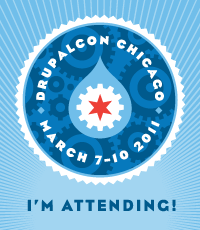
The performance of the EvalS application is now ready for primetime use. The team worked hard, in conjunction with help from Enterprise Computing, to make changes to the code to improve upon the speed of the application. Locally, you should see a significan improvement. What took over 30 seconds to load before now takes a second or two on bringing up a person’s evaluation. The initial load of the application is about 4 seconds, and still a little slow for our liking, so the team is looking at how to make it better. Half a world away, in Malaysia, I can access the EvalS system and begin entering in results, and on a slow-wi fi connection, it takes about 15 seconds to load. Not too bad.
The official notification went out on October 19th, by Jacque Rudolph. If you haven’t read the email from the inform list, you should. A kudos to the HR and Business Center team for all the hard work put into it. I found out more than I imagined about the process, and there are a lot of nuances to consider, with bargaining agreements, and other particulars to work with. Along the way, we hope we improved the process as well.
So how did it begin? Well it all began with a request for development of an electronic time reporting system, funded by the Provost. As Bob Nettles and I discussed, the decision was to ultimately look at a vendor system for the time reporting piece, as there are good systems already out there. So we couldn’t just sit around and develop nothing, and discussing with Jacque Rudolph and Bob Nettles, we said why don’t we tackle some of the other paper processes, and the evaluation process came to mind, due to its specific nature. With approval from the Provost, we set off in discussions and Agile development. We didn’t wait until all the details were there, otherwise it would have taken significantly longer. The Agile method allows for more rapid development, while gathering the particulars. We did show and tells along the way, and worked out many of the specifics.
The development team of Lead Developer Jose Cedeno with some assistance from Kenneth Lett, Mauricio Cordoba on styling, and Joan Lu, the software architect responsible for the overall technical design, put in a lot of hours, working weekends and then some to bring it together. We didn’t have the staff of a Google or a Microsoft, or my former company IBM, to implement this, but the talent of the two helped bring this to life. I put in a little time, myself on the original concept of the User Interface design, and Mauricio filled in the rest, so we do hope you find it as a good and modern interface. There’s still some things we can do to make it better, but we have to save some things for the next few releases, don’t we?
For those who don’t know what it takes to develop portlets, the little apps in a portal, send us a note, and we’ll fill you in. It does take some knowledge of Portal development, along with java programming expertise. So it’s not just for anyone to develop in.
This is one of the steps Central Web is taking in Greening OSU. So we encourage everyone to start using it. For the Classified IT and Professional Faculty, we will be working toward your electronic evaluations next, so as I always say, stay tuned. Sincerely, Jos Accapadi, Associate Director






